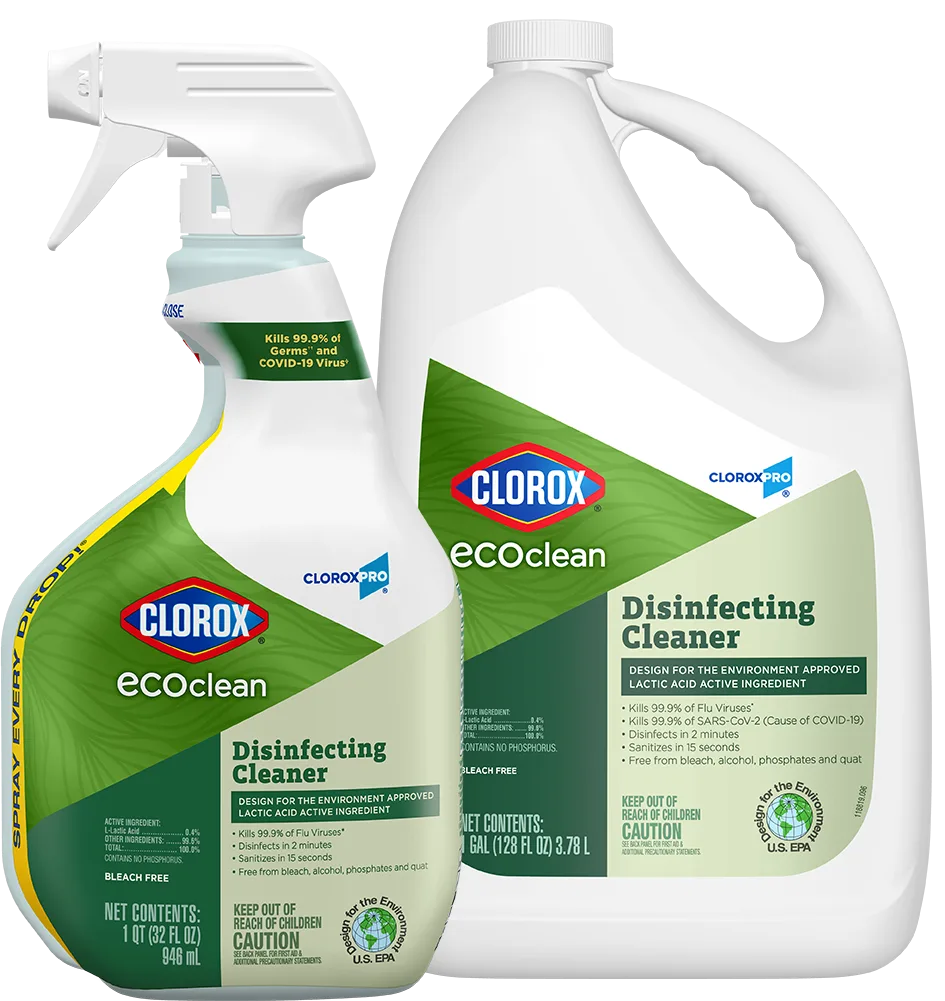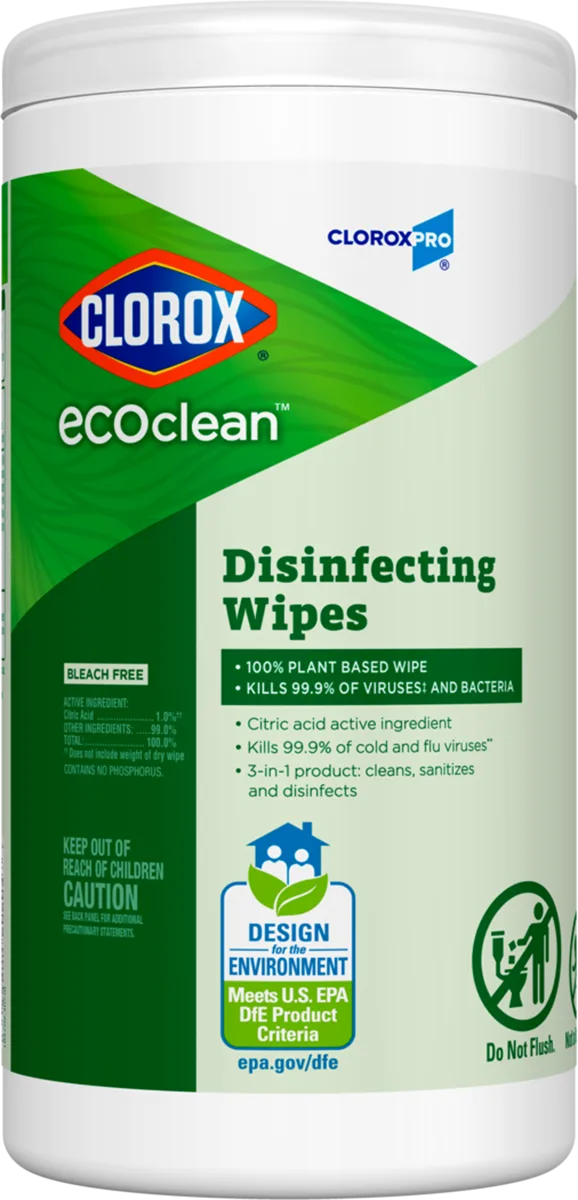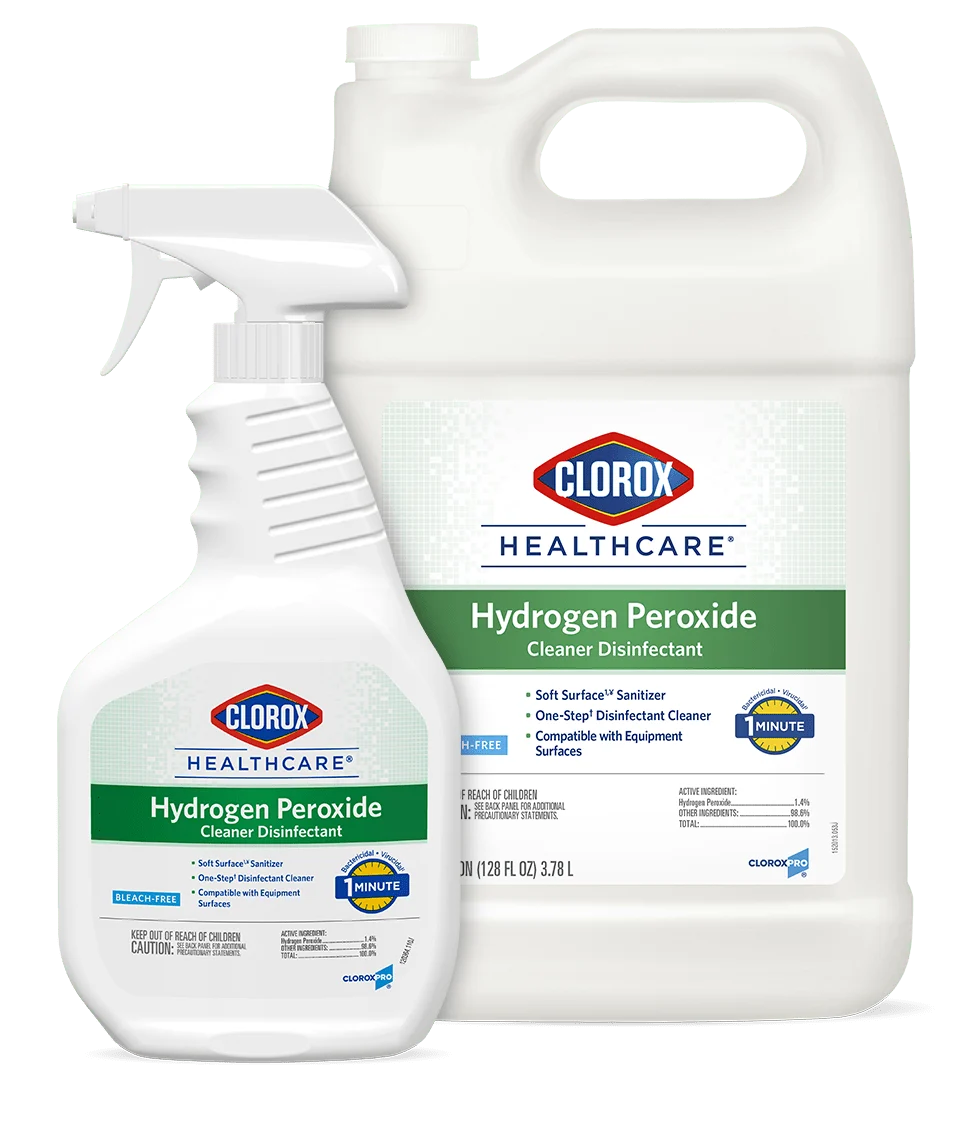Understanding Influenza
What Is Influenza?
Influenza, commonly referred to as “flu,” is a contagious viral infection caused by the influenza A or B viruses. The illness is associated with the upper respiratory system, and symptoms range from mild to severe. Vulnerable populations such as the elderly, young children, and people with inhibited or weak immune systems are at highest risk for complications. Outbreaks of influenza are seasonal, with the highest number of cases occurring during the winter. Both the influenza A and B viruses typically cause annual epidemics every winter in the United States. During the past 40 years, the most common influenza viruses circulating globally are influenza A (H1N1), influenza A (H3N2) and influenza B.1
Influenza Symptoms
Symptoms attributed to the flu often begin suddenly for individuals who have recently been infected. Fever is common, with temperatures often over 100.4°F, although this does not occur in all cases.2 Other common influenza symptoms include:
- Stuffy or runny nose
- Severe fatigue or inhibited levels of energy
- Headaches
- Chills or sweats
- Muscle aches or body soreness
- Coughing, sore throat, raspy voice
The influenza virus should not be confused with the illness commonly referred to as the “stomach flu,” which is caused by norovirus.
Incubation Period and Duration of Illness
The incubation period for an illness is the time that elapses between first exposure and the appearance of symptoms. While the incubation period for influenza varies, one to four days is typical, with most adults averaging two days.3 During this time people who have been exposed and infected with the virus can still pass it on to others before experiencing symptoms themselves. In healthy people, symptoms often last between five and seven days.4 The severity of these symptoms can impact one’s ability to do work or perform everyday tasks, often requiring infected people to take time off of work to rest and recover. Most otherwise healthy adults are usually able to fully recover from influenza symptoms in about a week. Symptoms may be more severe in young children, those over 65, pregnant women and those with chronic illnesses or compromised immune systems (such as people with diabetes, HIV and heart disease) and may be associated with complications such as pneumonia and longer recovery times.
Who Is At Risk?
Like other highly contagious illnesses, influenza is a risk to anyone who is regularly exposed to other people in public and shared spaces such as the workplace, healthcare facilities, schools or on public transport systems. A seasonal vaccine for influenza is developed every year with the strains expected to be the most prevalent for the flu season. Unvaccinated people are at a higher risk of catching influenza and experiencing more severe symptoms.5 Older adults, young children and people with weakened immune systems are most at risk for severe complications.5 Even otherwise healthy adults can experience illness significant enough to require hospitalization.
The Burden of Influenza
There are significant medical burdens associated with influenza:
- The CDC reports that each year since 2010, there have been 9.2 million to 36 million cases of influenza in the United States. The number of annual outpatient visits associated with influenza has been estimated at 31 million.6
- In the 2023–2024 flu season, influenza was responsible for 40 million illnesses, 18 million medical visits, 470,000 hospitalizations and 28,000 deaths.7
The resultant economic estimated burden is $3.2 billion for direct costs such as medical care and $8 billion for indirect costs such as loss of work time.8
Several factors are at play when determining the severity of a seasonal influenza outbreak in the United States. These include the effectiveness of the flu vaccine against the circulating influenza strains in a given season, the number of people who are vaccinated, and the timing of the outbreak. Although influenza vaccines are available every year, many people do not get vaccinated, which can increase the likelihood of both catching influenza and exposing others to the virus. The CDC estimates that during the 2023–2024 flu season, 9.8 million flu-related illnesses were prevented due to vaccinations.9
How Influenza Spreads
Respiratory Droplets and Direct Contact
The most common mode of transmission is via large respiratory droplets. These are expelled when infected people sneeze, talk or cough, and are inhaled by people nearby. The large droplets do not remain suspended in the air for very long, and transmission normally requires people to be in close contact — within six feet or less.10
Person-to-person transmission may also occur after a sick person touches another person with contaminated hands, and the virus comes into contact with the mucus membranes of the eyes, nose and mouth.10 People can contaminate their own hands by coughing or sneezing into them or with poor hand hygiene. The ease of transmission makes influenza a serious problem in areas where large numbers of people congregate, such as workplaces, schools, colleges, healthcare facilities and public events. People can spread the influenza virus without knowing it. Healthy adults are able to infect others with the flu beginning one day before they experience symptoms and can transmit the virus for up to seven days after experiencing sickness. Children and others with weaker immune systems can transmit the virus for even longer than seven days.
Surfaces and Indirect Contact
Although influenza is more commonly spread through direct transmission between people, hard surfaces also play a role in spreading influenza. Studies report that both influenza A and B viruses can live on stainless steel, plastic and other nonporous hard surfaces for up to 48 hours.11 Touching these surfaces can contaminate hands, which can then transmit the virus to the mouth, nose and upper respiratory tract. Transmission from surfaces can pose an issue to people who work in environments that require them to share surfaces with many other people on a daily basis, in public transit, schools and other public places.
Preventing the Spread of Influenza
Hand Hygiene and Cough Etiquette
Hand hygiene is crucial during flu season to prevent the spread of influenza. The virus can easily be transferred from frequently touched surfaces such as doorknobs, phones, and other surfaces to hands and then to the nose or mouth. Washing hands regularly with soap and water decreases the likelihood of acquiring influenza from surfaces. Avoid touching eyes, nose and mouth after touching common environmental surfaces during flu season. Practice cough etiquette to prevent the further spread of influenza by covering your mouth with a cloth or elbow and washing your hands after coughing before touching shared surfaces.
Cleaning and Disinfecting Surfaces
Regular cleaning and disinfection of environmental surfaces using a disinfectant that is registered by the Environmental Protection Agency (EPA) to inactivate influenza viruses helps prevent the spread of influenza. Thorough cleaning and disinfection in institutional settings such as schools, colleges, healthcare facilities and public transport systems, is important especially in winter months during peak flu season when influenza risk is increased. When using a disinfectant, always follow the product label’s directions for use and allow the disinfectant to stay wet on the surface for the indicated contact time to make sure the virus is inactivated.
CloroxPro Products Effective Against Influenza
A number of Clorox products are EPA-registered to kill influenza A and B viruses. Use these in daily cleaning and disinfection to help prevent the transmission of influenza virus. The contact time, is the time that the surface must remain visibly wet for the disinfectant to be effective against the specific influenza virus. Always follow the label’s directions for use when cleaning and disinfecting.
| Products for use against Influenza | Product image | EPA Reg. No. | Influenza contact time |
|---|---|---|---|
| Clorox EcoClean Disinfecting Cleaner and Refill Item No. 60213, 32 fl. oz. Spray, 9/case Item No. 60094, 128 fl. oz. refill, 4/case |  | 67619-45 | 30 sec |
| Clorox EcoClean Disinfecting Wipes Item No. 60605, 75 ct. Canister, 6/case |  | 67619-48 | 5 min |
| Clorox Germicidal Bleach Item No. 30966, 121 fl. oz. Bottle, 3/case |  | 67619-32 | 5 min |
| Clorox Clean-Up Disinfectant Cleaner with Bleach Item No. 35417, 32 fl. oz. Spray, 9/case Item No. 35420, 128 fl. oz. Refill, 4/case |  | 67619-17 | 30 sec |
| Clorox Disinfecting Wipes Item No. 15949, 75 ct. Canister, 6/case, Fresh Scent Item No. 15948, 75 ct. Canister, 6/case, Lemon Scent Item No. 31547, 700 ct. Bucket, 1/case, Fresh Scent Item No. 31428, 700 ct. Bucket Refill, 2/case, Fresh Scent |  | 67619-12 | 1 min |
| Clorox Disinfecting Spray Item No. 38504, 19 fl. oz. Aerosol Spray, 12/case |  | 67619-21 | 30 sec |
| Clorox Healthcare Bleach Germicidal Wipes Item No. 30577, 6" x 5" 150 ct. Canister, 6/case Item No. 35309, 6.75" x 9" 70 ct. Canister, 6/case Item No. 32621, 6.75" x 9" 100 ct. Softpack, 9/case Item No. 31424, 12" x 12" 50 ct. Carton, 6/case Item No. 30358, 12" x 12" 110 ct. Bucket, 2/case Item No. 30359, 12" x 12" 110 ct. Bucket Refill, 2/case |  | 67619-12 | 1 min |
| Clorox Healthcare VersaSure Cleaner Disinfectant Wipes Item No. 31757, 6" x 5" 85 ct. Canister, 6/case Item No. 31758, 6" x 5" 150 ct. Canister, 6/case Item No. 31759, 12" x 12" 110 ct. Bucket, 2/case Item No. 31761, 12" x 12" 110 ct. Bucket Refill, 2/case |  | 67619-25 | 1 min |
| Clorox Healthcare Hydrogen Peroxide Cleaner Disinfectant Cleaner Item No. 30828, 32 fl. oz. Spray, 9/case Item No. 30829, 128 fl. oz. Refill, 4/case |  | 67619-24 | 1 min |
| Clorox Healthcare Hydrogen Peroxide Cleaner Disinfectant Wipes Item No. 30824, 6.75" x 9" 95 ct. Canister, 6/case Item No. 30825, 6.75" x 5.75" 155 ct. Canister, 6/case Item No. 30826, 12" x 11" 185 ct. Bucket, 2/case Item No. 30827, 12" x 11" 185 ct. Bucket Refill, 2/case |  | 67619-25 | 1 min |
| Clorox Healthcare Fuzion Cleaner Disinfectant Item No. 31478, 32 fl. oz. Spray, 9/case |  | 67619-30 | 1 min |
Other Resources
Educational Resources
- Influenza Pathogen Education Sheet
- Pathogen Chats — Influenza (Video)
- Preventing the Spread of Influenza
- Respiratory Pathogens: Is it a Cold, RSV, Influenza or COVID-19?
Blog Posts
- From Past to Present: Cold and Flu Prevention for the 2023–2024 Season
- Say Boo to the Flu: How to Get Ahead of This Year’s Respiratory Illness Season
- Respiratory Illnesses Outlook and Prevention in a Neat Little Package
- Staying Healthy: Navigating Peak Cold and Flu Season in Schools
- Respiratory Pathogens: Is it a Cold, Flu, RSV or COVID-19?
References
1. Centers for Disease Control and Prevention. Seasonal Influenza (Flu): Types of Influenza Viruses. https://www.cdc.gov/flu/about/viruses-types.html?CDC_AAref_Val=https://www.cdc.gov/flu/about/viruses/types.htm (Accessed August 1, 2025).
2. Mayo Clinic. Influenza (Flu). https://www.mayoclinic.org/diseases-conditions/flu/symptoms-causes/syc-20351719. Accessed August 1, 2025).
3. Cleveland Clinic. (2022, October 11). Influenza (Flu): Treatment, Prevention, Symptoms Vs Cold. https://my.clevelandclinic.org/health/diseases/4335-influenza-flu (Accessed August 1, 2025).
4. Godman H. How Long Does the Influenza Last? Harvard Health Publishing. https://www.health.harvard.edu/staying-healthy/how-long-does-the-flu-last. (Accessed August 1, 2025).
5. CDC. (2024). People at Increased Risk for Flu Complications. https://www.cdc.gov/flu/highrisk/index.htm (Accessed August 1, 2025).
6. Centers for Disease Control and Prevention. (2024, November 13). About Estimated Flu Burden. Flu Burden. https://www.cdc.gov/flu-burden/php/about/index.html (Accessed August 1, 2025).
7. CDC. (2024d, November 20). Preliminary Estimated Flu Disease Burden 2023–2024 Flu Season. https://www.cdc.gov/flu-burden/php/data-vis/2023-2024.html (Accessed August 1, 2025).
8. Courville, C., Cadarette, S. M., Wissinger, E., & Alvarez, F. P. (2022). The economic burden of influenza among adults aged 18 to 64: A systematic literature review. Influenza and Other Respiratory Viruses, 16(3), 376–385. https://doi.org/10.1111/irv.12963
9. CDC. (2025, January 14). Flu Burden Prevented from Vaccination 2023-2024 Flu Season. Flu Burden. https://www.cdc.gov/flu-burden/php/data-vis-vac/2023-2024-prevented.html (Accessed August 1, 2025).
10. CDC. (2024, September 30). Infection Prevention and Control Strategies for Seasonal Influenza in Healthcare Settings. https://www.cdc.gov/flu/hcp/infection-control/healthcare-settings.html
11. Kramer A, Schwebke I, Kampf I. How long do nosocomial pathogens persist on inanimate surfaces? A systematic review. BMC Infect Dis. 2006; 6: 130.













